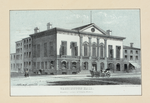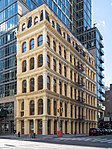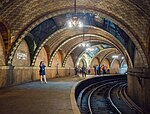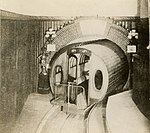Broadway–Chambers Building
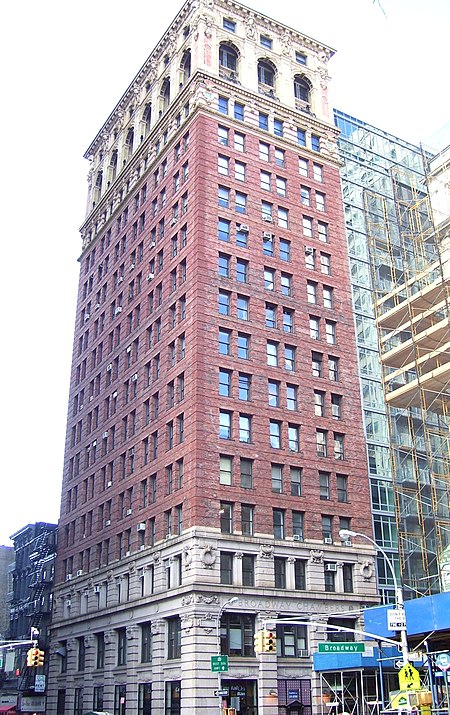
The Broadway–Chambers Building is an 18-story office building at 277 Broadway, on the northwest corner with Chambers Street, in the Civic Center and Tribeca neighborhoods of Manhattan in New York City. Completed by 1900 to designs by architect Cass Gilbert, the Broadway–Chambers Building was the first of several that Gilbert designed in the city. The Broadway–Chambers Building is designed in the Beaux-Arts style. The building's articulation consists of three horizontal sections similar to the components of a column, namely a base, shaft, and capital. Different materials are used in each horizontal section: granite on the base, brick on the shaft, and architectural terracotta on the capital. The Broadway–Chambers Building's design also incorporates one of Gilbert's trademarks, the extensive use of architectural sculpture on the cornice of the arcade at the top of the building, which includes the heads of lions and women. The building was constructed between 1899 and 1900. Several companies collaborated to create an exhibit about the construction of the building at the Paris Exposition of 1900. The Broadway–Chambers Building was made a New York City designated landmark in 1992.
Excerpt from the Wikipedia article Broadway–Chambers Building (License: CC BY-SA 3.0, Authors, Images).Broadway–Chambers Building
Broadway, New York Manhattan
Geographical coordinates (GPS) Address External links Nearby Places Show on map
Geographical coordinates (GPS)
| Latitude | Longitude |
|---|---|
| N 40.714444444444 ° | E -74.006388888889 ° |
Address
Broadway-Chambers Building
Broadway 277
10007 New York, Manhattan
New York, United States
Open on Google Maps



